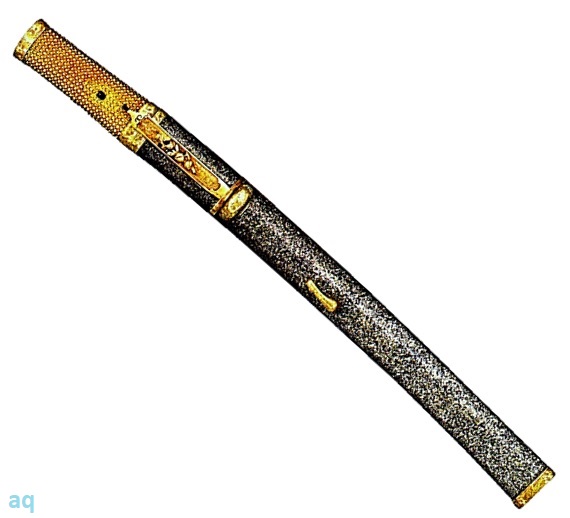The Chatan Nakiri is one of the three treasured swords handed down within the royal family of Ryūkyū. It has an unsigned blade and its sword mountings include mother-of-pearl inlays, dust-coated sheat, pure gold fittings and hilt.
Being an unsigned blade (mumei), it is assumed to have been produced in the fifteenth century. The sword blade was much used and is worn down significantly, and there is nothing left of the blade portion of the point (kissaki).
The blade length is 23cm. The sword blade (tōshin) is without shinogi (ridgeline) and yokote (=hira-zukuri) with a triangular blade spine (mune). It has a slight blade curvature (zori) and is sharply tapered towards the point. The whole ground metal shows itame-hada grain texture similar to that of tree rings. The blade’s temper pattern (hamon) shows a narrow and straight temper line (hoso-suguha) but without a temper line of the blade point (bōshi). As carvings (horimono) there is a thin groove (hi) on the ura side.
The over-all length including sword mountings (koshirae) is 46.5 cm. The sword sheath (saya) has a limpet mother-of-pearl varnish. The hilt (tsuka) is made of a golden plate processed in the way of a sharkskin (samegawa), and the metal fittings (kanagu) are of pure gold. On the dagger (kozuka) and the sword needle (kōgai) mounted on the sheath of the sword is engraved the ideogram of “heaven” (ten 天) in seal script, which was the symbol for articles in possession of the Ryūkyū Royal government.
Text originally published in: Quast, Andreas: Karate 1.0. 2013.
© 2022, Andreas Quast. All rights reserved.

